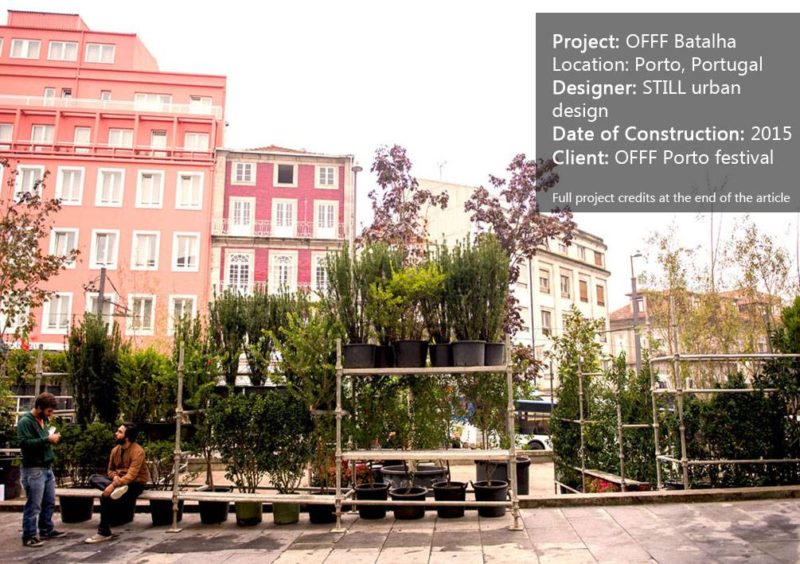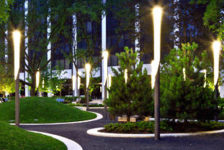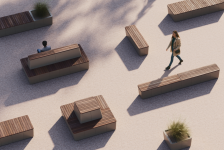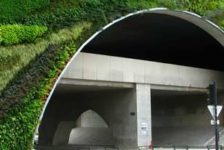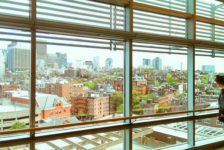Article by Lidija Šuster – A review of OFFF Batalha, by STILL urban design, in Porto, Portugal. Festivals come in all shapes and sizes, and are designed for celebrating all sorts of arts, foods, drinks, religions, and seasons. No matter how many people can be gathered at a festival and what the theme may be, they all have one important thing in common – a social role. The majority of people like to be part of cultural events, and landscape architects are there to help provide attractive, comfortable, and functional places to hold events that will fulfill the need for socialization. STILL urban design had the privilege to design the space for the OFFF Porto festival, which was held on the 23rd and 24th of October, 2015, at Batalha Cinema. This project has a specific nature, mainly because of its temporary role of emphasizing the important event. But there is more behind it than a mere announcement. Scratching below the surface will give us a peek into the core of this small yet meaningful project. By unfolding the layers of the OFFF Batalha concept, we take you all the way to Portugal, to see how the designers managed to fit their vision into such specific conditions.
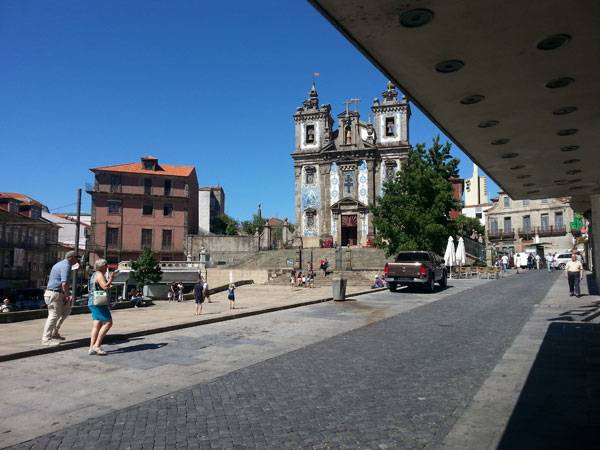
View from Batalha Cinema before the OFFF Festival. Photo Credit: Ana Oliveira

View from Batalha Cinema before the OFFF Festival. Photo Credit: Ana Oliveira
OFFF Batalha
Concretely, the OFFF festival is an international festival which is about creativity, innovation and contemporary creation. Perfect place for artistic souls, don’t you think? In 2015, Porto’s Batalha Cinema was chosen for the celebration of its 15th anniversary. What this festival offers are various conferences, workshops, the possibility of meeting the artists of our time, and many other activities that trigger the spark of inspiration and creativity. For people who seek this kind of energy and knowledge, an event like this is a must-attend.
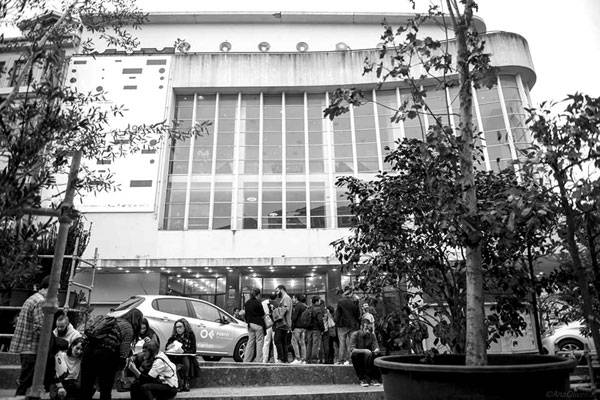
People in front of the Batalha Cinema during the OFFF Festival. Photo Credit: Ana Oliveira
Announcing the Event
When some important event is held indoors, it’s necessary to accentuate its manifestation outdoors. With the aid of landscape architecture skills, any happening can be highlighted, and that will almost always attract more visitors. STILL urban design skillfully announced this artistic festival, while offering a perfect place for the social interaction between OFFF Porto participants and the citizens of Porto.
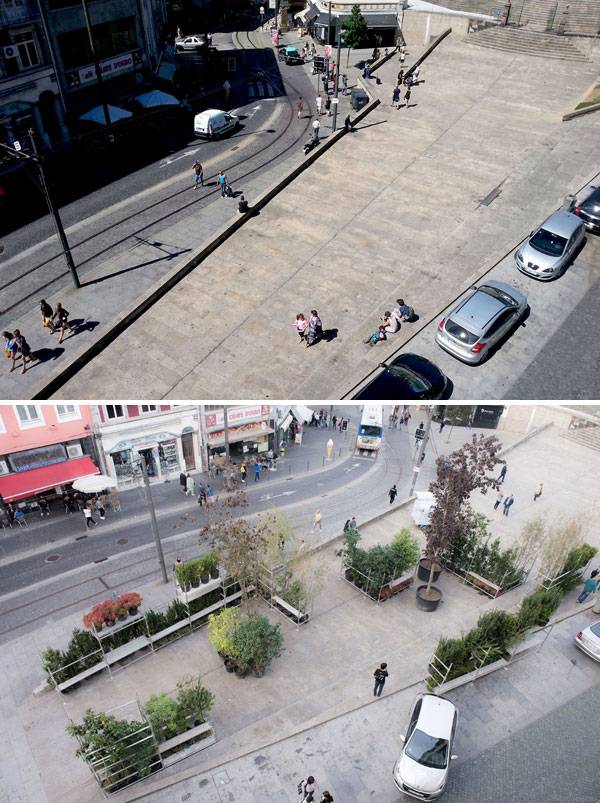
OFFF Batalha project before and after. Photo credit: Ana Oliveira
Installing a Construction
Creating an ephemeral space isn’t easy and requires good organization. The area around Batalha Cinema is highly trafficked, with a large number of cars and buses, together with pedestrians. The best way to deal with the combination of ephemerality and increased traffic is to install a construction. Constructions are easily movable, and more or less easy to put together. Maybe your first thought might be that some metal structure could not be very attractive, but there is always a solution. Combining metallic structures with plants sounds much better, right? What the designers did here is exactly that combination, but with a deeper meaning.
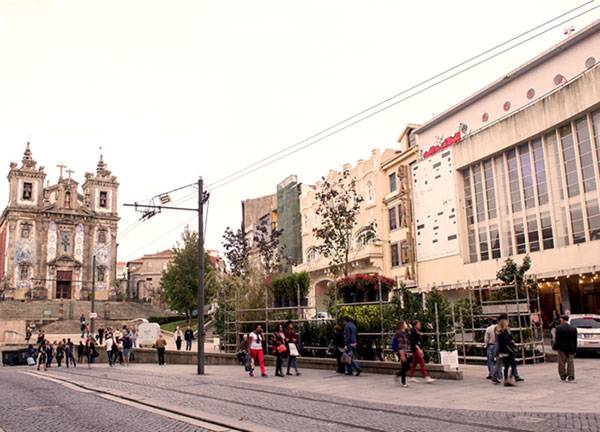
OFFF Batalha. Photo Credit: Ana Oliveira
The Complementarity of Organic and Artificial
Under normal circumstances, in front of the Batalha Cinema is just a concrete surface. This blank space served as a platform for the OFFF Batalha installation. The concept is based on the complementarity of vegetation and prefabricated metallic structures. In this case, public space is presented as a factory of innovations, ideas, and social interactions.
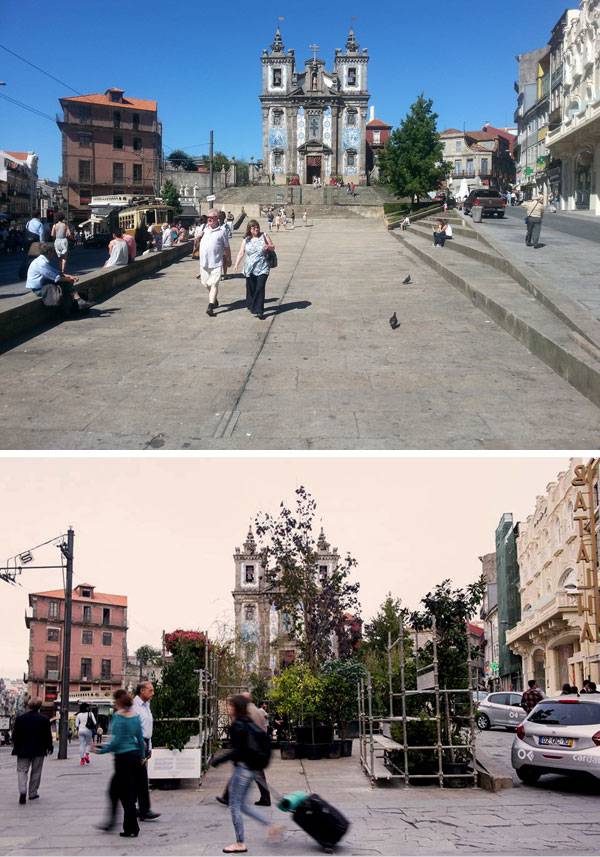
OFFF Batalha project before and after. Photo credit: Ana Oliveira
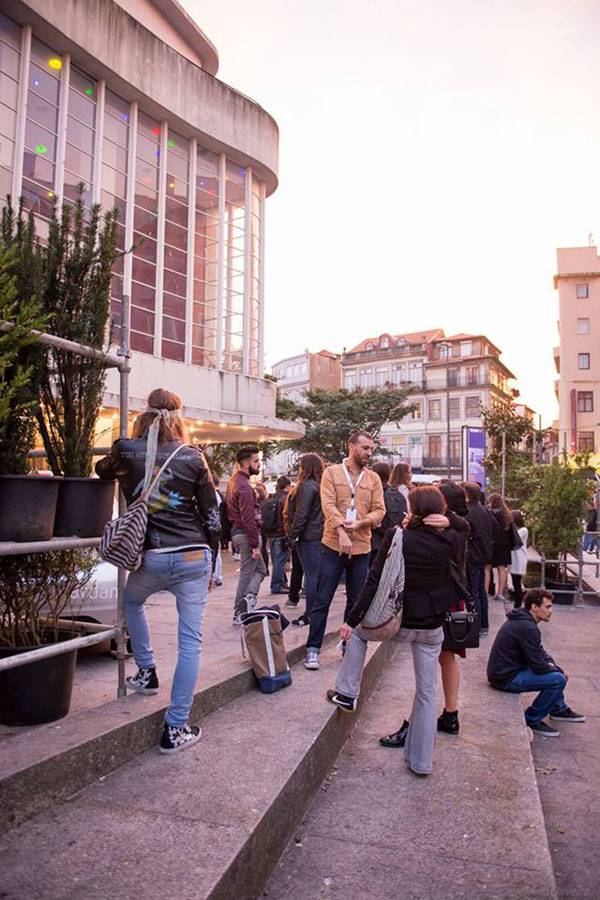
Social interactions in front of the Batalha Cinema. Photo credit: Ana Oliveira
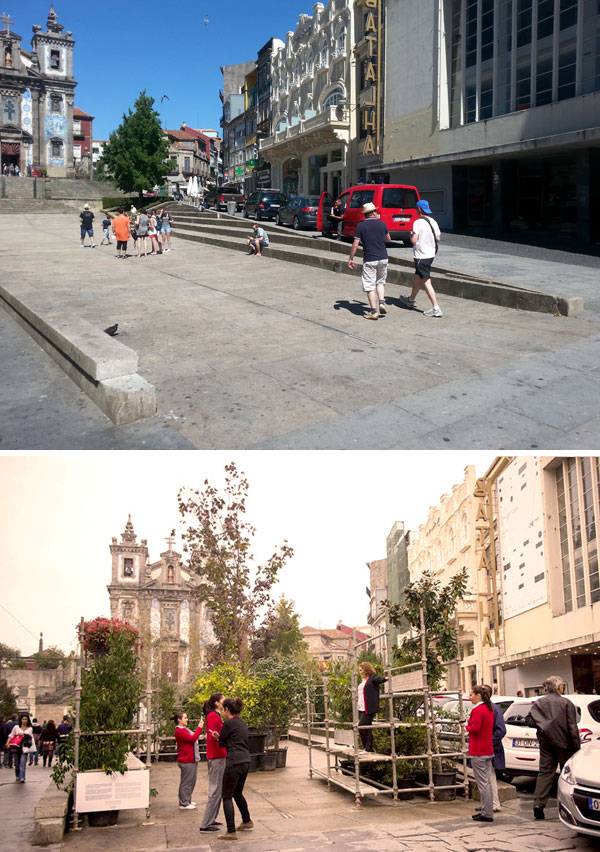
OFFF Batalha project before and after. Photo credit: Ana Oliveira
October Transition
Because the OFFF Porto was held in October, the designers necessarily considered its climate conditions. October is kind of unique month. The autumn is coming to an end, furiously rushing towards winter. It represents transition from warmer weather to more and more colder months. The vegetation used included coniferous as well as deciduous trees and shrubs. The guiding star was to use vegetation to create various slopes of shade, so people would be able to locate which spot is the most suitable for them. Surely for every individual there is different thermal comfort value, so the different vegetation gradients should satisfy a various range of comforts.
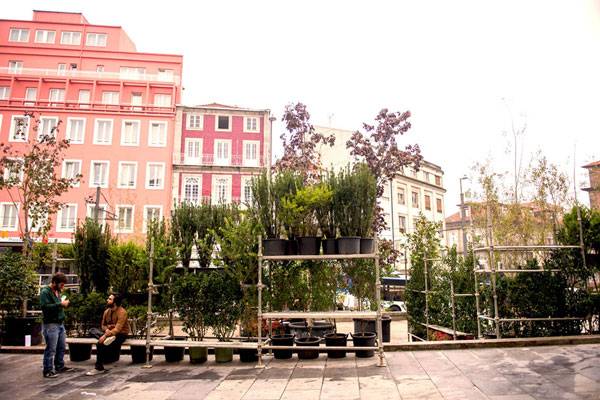
OFFF Batalha project before and after. Photo credit: Ana Oliveira

OFFF Batalha. Photo credit: Ana Oliveira

OFFF Batalha. Photo credit: Ana Oliveira
Full Project Credits For OFFF Batalha :
Project Name: OFFF Batalha Location: Porto, Portugal Designer: STILL urban design Date of Construction: 2015 Status: Concluded Client: OFFF Porto festival Team: João Cortesão (urban designer), Sofia Pera (urban designer), Miguel Seabra (artist) Partners: Câmara Municipal do Porto, Soares da Costa Photo Credit: Ana Oliveira Recommended Reading:
- Becoming an Urban Planner: A Guide to Careers in Planning and Urban Design by Michael Bayer
- Sustainable Urbanism: Urban Design With Nature by Douglas Farrs
Article by Lidija Šuster
Published in Blog


